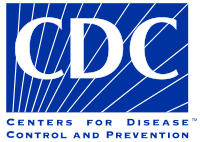
Photo from wikipedia
Objective: The Centers for Disease Control and Prevention’s Prevention Research Centers (PRCs) collaborate on public health activities with community agencies and organizations. We evaluated these collaborations by studying the relationships… Click to show full abstract
Objective: The Centers for Disease Control and Prevention’s Prevention Research Centers (PRCs) collaborate on public health activities with community agencies and organizations. We evaluated these collaborations by studying the relationships between co-authors from the PRCs and community agencies that published at least 1 article together in the first year of the program. Methods: We identified all the authors of articles published by PRCs and collaborating members in peer-reviewed journals between September 2014 and September 2015 and constructed a network showing the links between and among all the authors. We characterized the network with 4 measures of social structure (network components, network density, average clustering coefficient, average distance) and 3 measures of individual author performances (degree-, betweenness-, and closeness-centrality). Results: The 413 articles had 1804 individual authors and 7995 co-authorship relationships (links) in 212 peer-reviewed journals. These authors and co-authors formed 44 separate, nonoverlapping groups (components). The largest “giant” component containing most of the links involved 66.3% (n = 1196) of the authors and 73.7% (n = 5889) of the links. We identified 136 “information brokers” (authors with high closeness centrality: those who have the shortest links to the most authors). Two authors with high betweenness centrality (who had the highest number of co-authors; 104 and 107) had the greatest ability to mediate co-authorships. Network density was low; only 0.5% of all potential co-authorships were realized (7995 actual co-authorship/1 628 110 potential co-authorships). Conclusion: Information brokers and co-authorship mediators should be encouraged to communicate more with each other to increase the number of collaborations between network members and, hence, the number of co-authorships.
Journal Title: Public Health Reports
Year Published: 2019
Link to full text (if available)
Share on Social Media: Sign Up to like & get
recommendations!